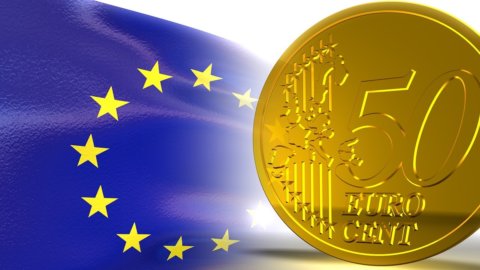Sono stati presentat ieri a Roma il XXVIII Rapporto export ICE 2013-14 “L’Italia nell’economia internazionale” e l’Annuario 2014 ISTAT-ICE “Commercio estero e attività internazionali delle imprese”.
Articolato in sette capitoli che forniscono un quadro sulla struttura geografica e settoriale e sulla dinamica del commercio estero e dell’internazionalizzazione dell’Italia in rapporto a quella di altri paesi, il Rapporto ICE è arricchito da grafici e tavole e contiene brevi riquadri e approfondimenti monografici sui temi di maggiore attualità. Un apposito capitolo esamina le modalità di internazionalizzazione delle imprese italiane. Il Rapporto è da molti anni un appuntamento di rilievo non solo per gli addetti ai lavori, ma anche per tutti coloro che cercano di capire come sta modificandosi la presenza delle nostre imprese sui mercati internazionali.
Secondo l’analisi dell’ICE la crescita dell’economia mondiale, dopo il rallentamento del 2013, dovrebbe rafforzarsi progressivamente nel corso di quest’ anno e nel 2015. Permangono tuttavia molte incertezze, legate alla volatilità dei mercati finanziari, alla presenza di squilibri macroeconomici e a crescenti tensioni geo-politiche.
Segnali di miglioramento provengono dalle economie avanzate, dove nell’anno in corso è previsto un aumento del Pil dell’1,8%. Tra i paesi sviluppati, gli Stati Uniti dovrebbero crescere ad un tasso dell’1,7 % in base d’anno, malgrado la contrazione registrata nel primo trimestre 2014. Il ciclo negativo dell’Area dell’euro, iniziato a fine 2011, dovrebbe concludersi e il Pil dovrebbe espandersi dell’1,1%.
I paesi emergenti e in via di sviluppo, che ormai realizzano oltre la metà del prodotto mondiale, si confermano l’area più dinamica, con una crescita del 4,6%, inferiore tuttavia ai ritmi degli ultimi anni a causa del rallentamento della dinamica degli investimenti e dei corsi delle materie prime. I due paesi principali, Cina e India, che da soli pesano per oltre il 20 per cento del Pil mondiale, dovrebbero registrare andamenti diversi: a fronte di un’accelerazione del Pil indiano (+5,4%), la Cina dovrebbe sperimentare un rallentamento, con un tasso di espansione pari al 7,4%, inferiore alla media del decennio precedente. Una crescita piuttosto sostenuta è attesa per l’Africa e il Medio Oriente (rispettivamente il 5,4 e il 3,1%), mentre l’acuirsi delle tensioni in Ucraina ha inciso negativamente sulle prospettive di crescita della Russia (0,2 %, oltre un punto percentuale in meno rispetto alle previsioni di aprile).
La seppur modesta ripresa economica, unitamente a una favorevole dinamica dei prezzi delle materie prime, dovrebbe stimolare una crescita più rapida degli scambi di beni e servizi (pari al 4% nel 2014 e al 5,3% nel 2015) anche se a tassi inferiori rispetto a quelli delle fasi espansive precedenti.
La classifica dei primi venti esportatori di merci non presenta cambiamenti significativi, la Cina si è confermata al primo posto, con una quota dell’11,8%, in lieve aumento rispetto agli anni precedenti. L’unico mutamento di rilievo riguarda il Regno Unito, passato dall’undicesima posizione del 2012 all’ottava nel 2013. L’Italia, che era in nona posizione, è invece arretrata in undicesima.
Nel 2013, le esportazioni mondiali di servizi sono cresciute più di quelle di merci, a un tasso del 5,5% in valore.
Gli scambi di beni e servizi e le varie forme di produzione internazionale sono sempre più interdipendenti: la maggior parte degli scambi mondiali (l’80 per cento, secondo stime Unctad) avviene nell’ambito di reti produttive internazionali (dette anche catene globali del valore), costituite da imprese multinazionali, dalle loro affiliate e da vari fornitori di beni intermedi e servizi alla produzione collocati in paesi diversi. Ciò rende le economie molto più integrate, ma anche più vulnerabili agli shock economici.
Gli investimenti diretti esteri (Ide), in forte espansione dalla metà degli anni novanta, rappresentano un elemento centrale nelle reti globali di produzione, sia nel comparto manifatturiero che nei servizi, dove prima della crisi hanno mostrato una dinamica elevata. Nel 2013 gli afflussi mondiali di Ide sono aumentati del 9 per cento, pur rimanendo ancora inferiori ai valori raggiunti prima della crisi.
Nell’Unione Europea sono affiorati nel 2013 i primi segni di ripresa economica, trainata essenzialmente dalle esportazioni nette. Nei prossimi mesi la crescita del Pil è prevista in lieve accelerazione (1,6% nel 2014 e 1,8 nel 2015), con un contributo maggiore della domanda interna. Durante la crisi, l’incidenza dell’Unione Europea sulle importazioni mondiali si è sensibilmente ridotta: riflettendo la debolezza della domanda interna e il calo dei prezzi delle materie prime, è passata dal 38 al 31% tra il 2008 e il 2013.
Per quanto riguarda il nostro paese, il volume del prodotto interno lordo italiano si è contratto dell’1,9 per cento nel 2013, tornando su un livello comparabile a quello del 2000. La caduta è dovuta essenzialmente all’ulteriore riduzione di consumi e investimenti, causata dal protrarsi della compressione del reddito disponibile, dal peggioramento della fiducia di famiglie e imprese e da persistenti difficoltà di accesso al mercato creditizio. La ripresa, avviatasi nella seconda metà dell’anno, appare lenta e fragile. La domanda nazionale, pur mostrando qualche accenno di recupero, resta debole e il sostegno principale alla crescita continua a dipendere dalle esportazioni nette, condizionate dalle incertezze dello scenario internazionale. Secondo le ultime stime della Banca d’Italia, il Pil potrebbe crescere dello 0,2% nel 2014 e dell’1,3% l’anno prossimo.
Sul forte miglioramento del saldo corrente della bilancia dei pagamenti, che dopo tredici anni ha registrato un segno positivo (15 miliardi di euro, pari a circa l’1% del prodotto interno lordo) ha influito la recessione: come altre volte in passato, il riequilibrio dei conti con l’estero risente di una diminuzione delle importazioni, più che di un andamento particolarmente favorevole delle esportazioni (ferme nel 2013 a -0,1%). Nell’ultimo biennio, contrassegnato da una riduzione complessiva del Pil del 4,2%, le importazioni di beni e servizi sono cadute del 9,6%, mentre le esportazioni sono aumentate del 2,3%, al di sotto della crescita media di quelle dei paesi dell’Eurozona (3,7%), risentendo di un orientamento geografico relativamente più concentrato verso mercati a crescita lenta.
L’attivo corrente del 2013 è stato generato principalmente dagli scambi di merci, il cui surplus ha raggiunto i 37 miliardi di euro, in aumento di 20 miliardi rispetto al 2012, ma vi ha contribuito anche il saldo dei servizi. Il disavanzo nei prodotti energetici si è ridotto di circa 9 miliardi, riflettendo il calo delle loro quotazioni in dollari, l’apprezzamento dell’euro e la flessione della domanda. Il surplus manifatturiero è aumentato ulteriormente, superando i 98 miliardi. In diversi settori importanti e in numerosi prodotti, i saldi positivi del commercio estero italiano hanno raggiunto dimensioni ragguardevoli, anche rispetto agli altri principali paesi europei, non soltanto per effetto della caduta delle importazioni, ma anche per i risultati conseguiti dalle esportazioni.
Contrariamente a quanto avvenuto nell’anno precedente, nel 2013 gli Ide, sia in entrata che in uscita, sono cresciuti. Gli investimenti italiani all’estero sono aumentati da 6 miliardi a quasi 24, grazie alla componente dei prestiti intrasocietari. Gli investimenti esteri in Italia sono passati da un valore quasi nullo a circa 12 miliardi, pari a poco più dell’1% dei flussi di Ide in entrata nel mondo.
Anche in termini di consistenze la quota italiana, pari all’1,6% del totale mondiale, appare molto inferiore al potenziale economico del paese, manifestando in modo eloquente la sua scarsa capacità attrattiva. Vi contribuiscono fattori strutturali che da lungo tempo penalizzano il nostro sistema economico. Il peso e il ritardo di risposta della burocrazia, la complessità e opacità della legislazione e la lentezza dell’accesso alla giustizia, tra gli altri, disincentivano i potenziali investitori esteri. A essi si è aggiunta nell’ultimo biennio la forte recessione, che ha falcidiato la capacità produttiva della nostra industria e ridotto la domanda interna.
L’Italia ha seguito, sia pure con ritardo, le tendenze del commercio internazionale, riorientando progressivamente le proprie esportazioni in mercati lontani. Così, parallelamente a una riduzione del peso dell’Unione Europea, pur sempre primo partner commerciale, su cui si riversa ancora oltre il 50% delle esportazioni italiane, è aumentata l’incidenza di aree meno vicine ma più dinamiche, come l’Asia orientale, l’Africa e le Americhe.
Si notano alcuni cambiamenti rilevanti nel modello di specializzazione internazionale dell’industria italiana. Rispetto all’inizio degli anni duemila e anche nel quinquennio
della crisi, si sono ulteriormente attenuati i vantaggi comparati nell’insieme dei settori tradizionali, e in particolare nel sistema moda. Parallelamente si nota un ulteriore rafforzamento della specializzazione nella meccanica e un leggero recupero nei settori a forti economie di scala e ad alta intensità di ricerca, che rappresentano il principale elemento di divergenza del modello italiano rispetto ai maggiori paesi industriali.
Le previsioni della Banca d’Italia per il 2014 indicano un aumento del surplus corrente di bilancia dei pagamenti, con una crescita delle esportazioni di beni e servizi (3,4 per cento) superiore a quella delle importazioni (1,7 per cento). La domanda estera resta dunque decisiva per il sostegno dell’attività economica e dell’occupazione, in particolare nell’industria. Nel biennio precedente l’inizio della grande crisi, il numero degli addetti nelle imprese manifatturiere esportatrici era cresciuto a un tasso medio dello 0,6 per cento, mentre nelle imprese che operano soltanto sul mercato interno era caduto del 2,2 per cento all’anno. Le due ondate di crisi che si sono succedute nell’ultimo quinquennio hanno provocato un drastico calo dell’occupazione in tutto il sistema industriale, ma le imprese esportatrici hanno subito perdite meno forti di quelle che operano soltanto sul mercato interno.
La soluzione alla crisi di sistema del nostro paese può consistere solo nella ricerca di innovazioni di prodotto, capaci di imporsi con successo nei modelli di consumo dei ceti medi, soprattutto nei paesi emergenti. Inoltre contano molto le innovazioni di processo, non soltanto quelle tecnologiche, ma anche quelle organizzative, tra le quali possono essere annoverate le scelte strategiche necessarie per presidiare i canali distributivi, diversificare i mercati di sbocco, inserirsi nelle reti produttive internazionali che stanno riorganizzando la divisione del lavoro su scala globale.
A questo scopo può svolgere un ruolo importante il sistema di sostegno pubblico all’internazionalizzazione delle imprese, che ha non soltanto la funzione di ridurre i costi di accesso ai mercati esteri per le piccole e medie imprese che usano i suoi servizi, ma anche quella di generare benefici indiretti per tutto il sistema produttivo, purché le sue attività vengano sottoposte a rigorose procedure di controllo e valutazione dei risultati.
Occorrono inoltre misure efficaci per attrarre investimenti esteri, riducendo quello che appare come il limite più grave del modello di apertura internazionale dell’economia italiana. Una maggiore presenza di multinazionali straniere, oltre a generare benefici diretti in termini di apporto di capitali e competenze, potrebbe favorire la partecipazione delle imprese italiane alle reti produttive internazionali, che si sono dimostrare la chiave di volta per lo sviluppo del commercio internazionale.





